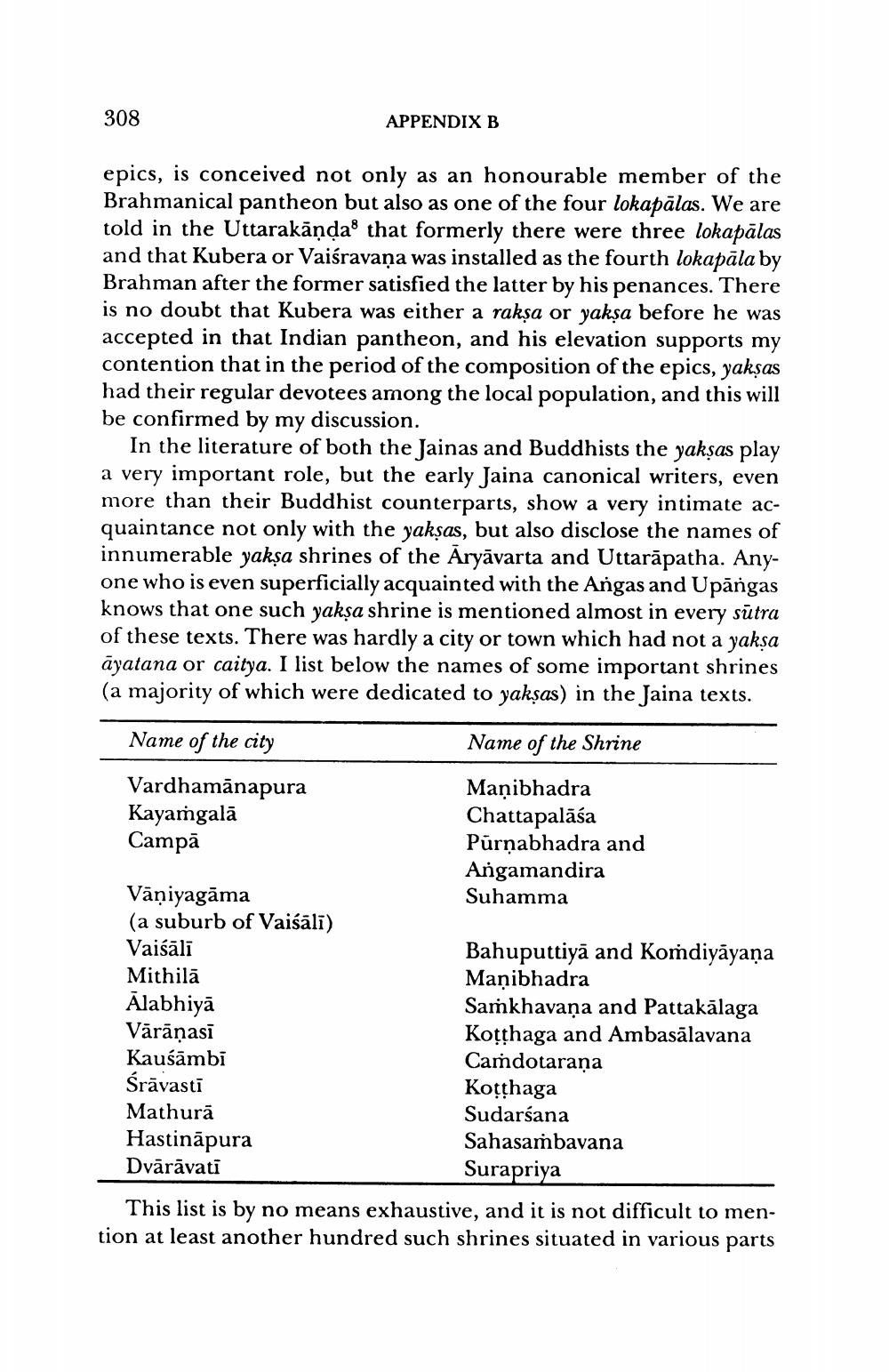________________
308
APPENDIX B
epics, is conceived not only as an honourable member of the Brahmanical pantheon but also as one of the four lokapālas. We are told in the Uttarakānda that formerly there were three lokapālas and that Kubera or Vaiśravana was installed as the fourth lokapāla by Brahman after the former satisfied the latter by his penances. There is no doubt that Kubera was either a rakṣa or paksa before he was accepted in that Indian pantheon, and his elevation supports my contention that in the period of the composition of the epics, yakşas had their regular devotees among the local population, and this will be confirmed by my discussion.
In the literature of both the Jainas and Buddhists the yakşas play a very important role, but the early Jaina canonical writers, even more than their Buddhist counterparts, show a very intimate acquaintance not only with the yaksas, but also disclose the names of innumerable yakșa shrines of the Aryāvarta and Uttarāpatha. Anyone who is even superficially acquainted with the Angas and Upāngas knows that one such yakşa shrine is mentioned almost in every sūtra of these texts. There was hardly a city or town which had not a yaksa āyatana or caitya. I list below the names of some important shrines (a majority of which were dedicated to yakşas) in the Jaina texts.
Name of the city
Name of the Shrine
Vardhamānapura Kayamgalā Campā
Manibhadra Chattapalāśa Purnabhadra and Angamandira Suhamma
Vāņiyagāma (a suburb of Vaiśāli) Vaiśālī Mithilā Alabhiya Vārānasi Kaušāmbi Śrāvasti Mathurā Hastināpura Dvārāvati
Bahuputtiyā and Komdiyāyaṇa Manibhadra Samkhavana and Pattakālaga Kotthaga and Ambasālavana Camdotarana Kotthaga Sudarsana Sahasambavana Surapriya
This list is by no means exhaustive, and it is not difficult to mention at least another hundred such shrines situated in various parts




